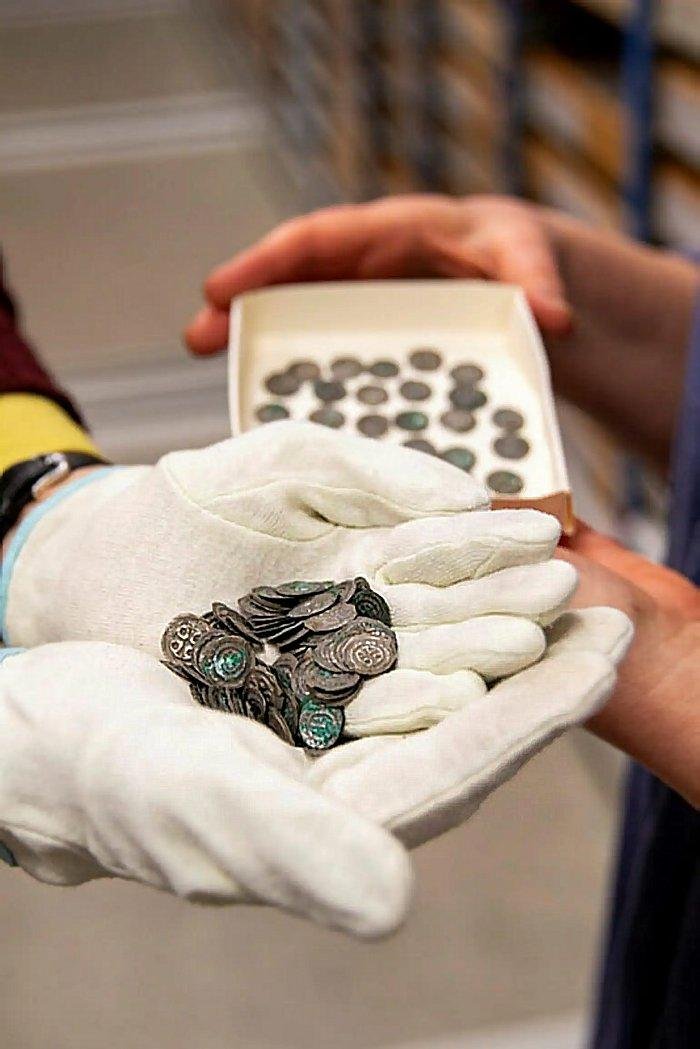Archaeologists from the Jönköping County Museum have uncovered a remarkable treasure trove of 170 silver coins in a grave at Brahe Church on Visingsö, a Swedish island steeped in rich historical significance. The find was made during excavation work for the installation of a geothermal heating system.
 The coins are believed to have been made sometime between 1150 and 1180. Credit: Jönköping County Museum
The coins are believed to have been made sometime between 1150 and 1180. Credit: Jönköping County Museum
The island of Visingsö, situated in Lake Vättern, held strategic importance during the 12th and 13th centuries as the seat of power for the Swedish monarchy. Notably, four Swedish kings, including Karl Sverkersson and Magnus Ladulås, are known to have been buried on the island.
The discovery at Brahe Church, constructed in the 17th century atop the remnants of a 12th-century church, yielded more than just coins. Excavations revealed the skeletal remains of two individuals, with only the lower halves of their bodies intact. Preliminary analysis suggests one of the deceased was a man aged between 20 and 25 years old.
The coins, known as silver bracteates, were found near the left foot of one of the two skeletons. Estimated to be from the period between 1150 and 1180, these coins are believed to be among the oldest ever minted in Sweden, potentially predating even those found in Sigtuna, an ancient Swedish town dating back to the Viking Age.
Bracteates, thin silver coins with one-sided designs minted primarily in German-speaking regions, were circulated during the 12th century. The discovery of such a sizable hoard of these coins within a Christian burial site is highly unusual.
Anna Ödéen, project manager and archaeologist at the Jönköping County Museum expressed excitement about the find, emphasizing its potential to reshape the understanding of early medieval coinage history in the region. Eeva Jonsson of the Royal Coin Cabinet described the discovery as “completely sensational” and indicative of a period that remains largely unexplored.
The island of Visingsö served as a battleground for rival dynasties, including the Houses of Sverker and Erik. However, the significance of Visingsö extends beyond its role in medieval royal history. Previous excavations have unearthed artifacts ranging from Bronze Age graves to pre-Roman Iron Age burial grounds, highlighting the island’s enduring significance throughout the ages.
Speculation abounds regarding the motives behind this burial practice, with researchers hopeful that continued study will yield answers. As the coins undergo preservation and further study, they will be temporarily displayed at the Jönköping County Museum.





